Flows
Now imagine pouring a thick chocolate milkshake down that playground slide. Instead of moving downward as a rigid body, it flows down as liquid. There is a category of mass movement that also moves like this called "flows". These take place when the moving materials behave as a fluid because they are mixed with air or water—most commonly when they are saturated with water. Click through the tabs to learn more about common types of flows.
Mudflow
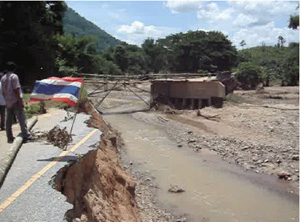
The ground must be saturated with water in order for a mudflow to occur. These are rapid downhill flows of soil and water; they can be very destructive. Mudflows are common after heavy rains and are especially common where rain is abundant but intermittent, or seasonal. They are also frequent after spring snowmelts. They contain up to about 30% water, making them one of the wettest types of mass movement. The water enters the soil, makes the particles sticky, and allows them to easily slip past each other and tumble downhill. Mudflows are also the most rapid type of mass movement and are usually confined to channels. Mudflows are slowed down by dense vegetation, so keeping an area vegetated is one way to prevent them.
Debris flow
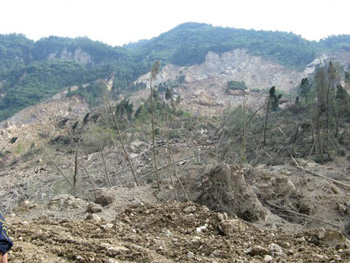
A debris flow is a fast-moving fluid type of mass movement. They differ from mudflows in that they may carry rocks and boulders as well as vegetation, while mudflows are made primarily of saturated soil. Debris flows, like other types of mass movement, are often triggered by high rainfall or by earthquakes.
Solifluction
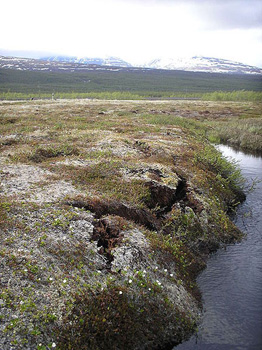
Solifluction is the mass movement that occurs on areas covered with permafrost and takes place very slowly, as opposed to mudflows and debris flows. Solifluction happens when the ice covering an area melts in the spring, leading to a sudden saturation of the ground.
Avalanche
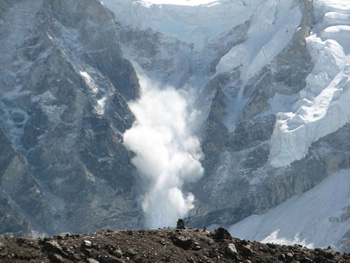
An avalanche is the sudden down-slope movement of snow. It can travel great distances and be very destructive.
Earth flow
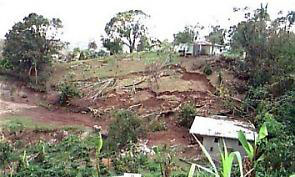
An earth flow is similar to a mudflow, but it contains less water. Earth flows are slower than mudflows and debris flows, and they are less destructive. Earth flows are typically broad and cover large areas of land. Unlike mudflows, they are not confined to channels.
Soil creep
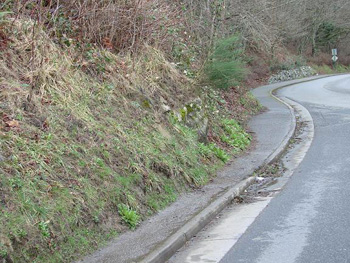
Soil creep is the slowest type of mass movement, as well as the least destructive. It is usually imperceptible and is only noticed by clues such as bent tree trunks or sloping utility poles. It normally happens through repeated cycles of freezing and thawing. The soil expands outward when it freezes, and then gets slowly pulled down-slope by gravity after it thaws. In this picture, a hillside is slowly encroaching on a sidewalk through the process of soil creep.